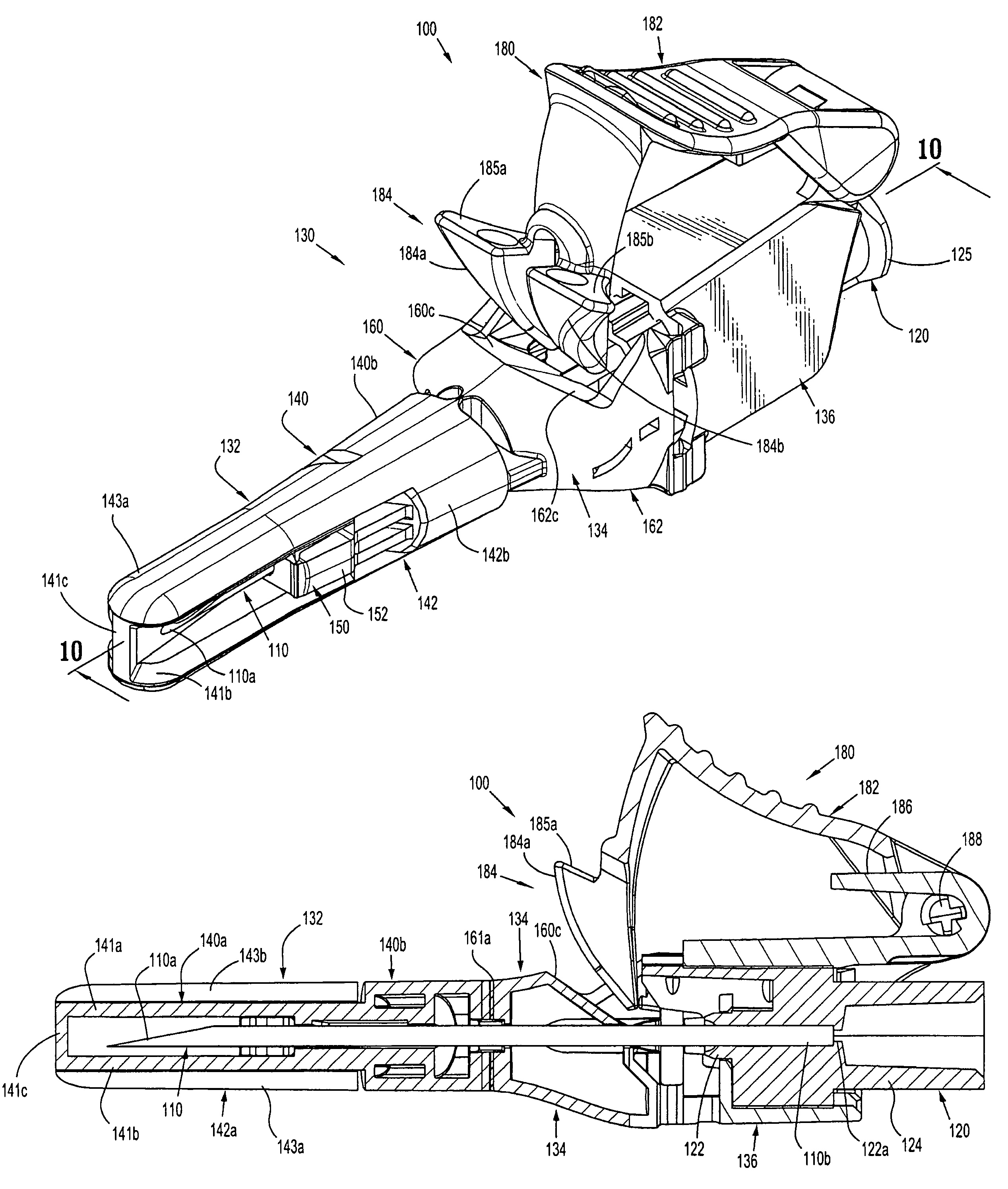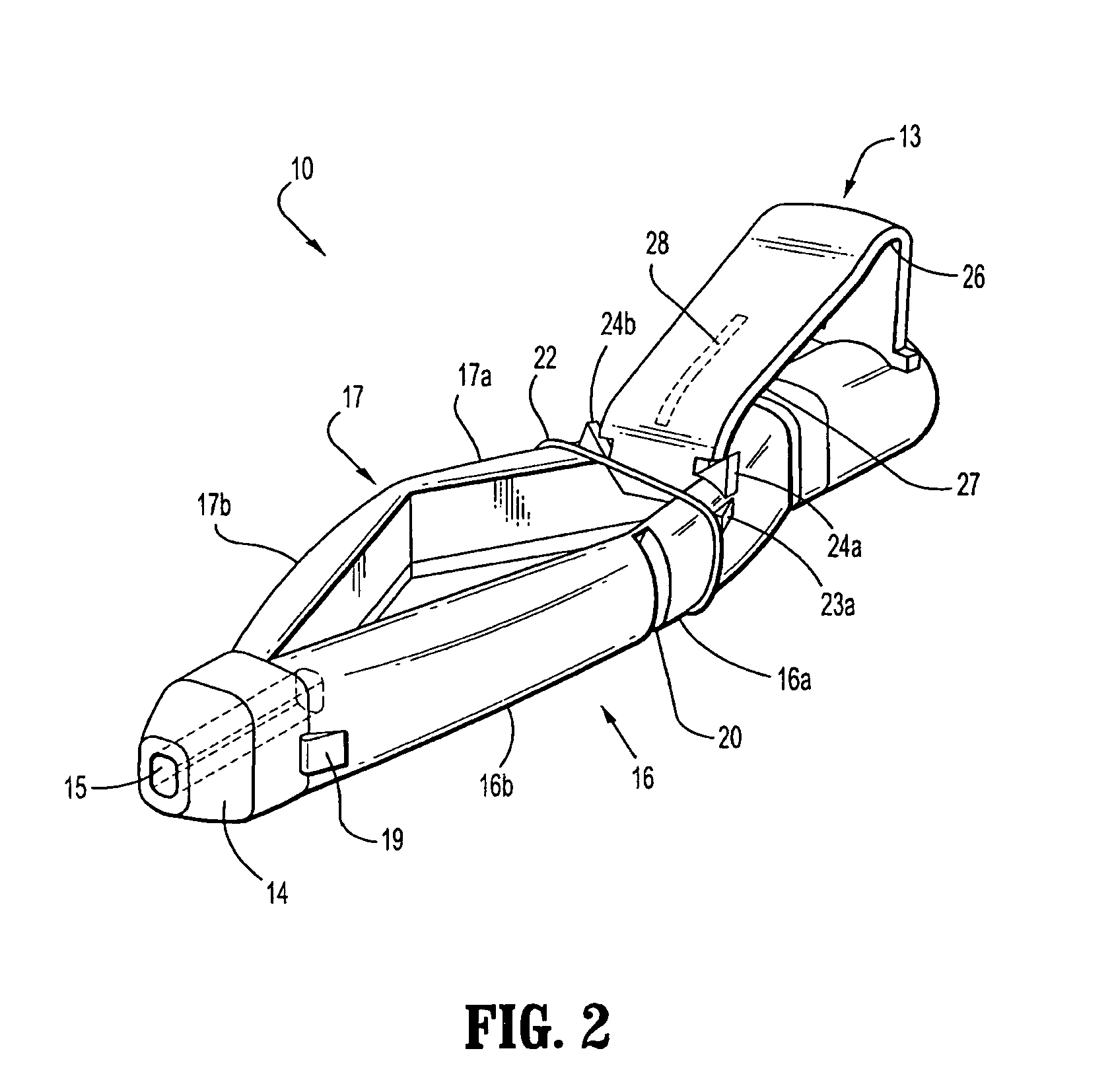Safety device with trigger mechanism
a safety device and trigger mechanism technology, applied in the field of safety devices, can solve the problems of only being suitable for injecting fluid into a patient, not suitable for taking a sample from a patient, and the needle may pass on the infection
- Summary
- Abstract
- Description
- Claims
- Application Information
AI Technical Summary
Benefits of technology
Problems solved by technology
Method used
Image
Examples
Embodiment Construction
[0064]With reference to FIGS. 1 to 4 a safety device assembly 10 is presented comprising a needle receiving portion 11, a sheath portion 12 and a trigger mechanism 13.
[0065]The needle-receiving portion 11 operably receives and holds a needle (see FIGS. 3a, 3b, 3c) and / or a needle luer combination and assembly of such.
[0066]The sheath portion 12 comprises a nose plate 14 having a bore 15 therethrough, with resiliently flexible legs 16, 17 extending between the needle receiving portion 11 and the nose plate 14 and operably connected at these junctures by hinges 18, 19 on both legs 16, 17.
[0067]The safety device assembly 10 is formed by a one piece injection moulding process.
[0068]Each resiliently flexible leg 16, 17 of the safety device 10 has a central knee joint 20, 21 separating the back portion of the legs 16a, 17a and the front portion of the legs 16b, 17b. The configuration of the leg portions 16a, 17a; and knee joints 20, 21 ensure that longitudinal forces acting on the nose pl...
PUM
 Login to View More
Login to View More Abstract
Description
Claims
Application Information
 Login to View More
Login to View More - R&D
- Intellectual Property
- Life Sciences
- Materials
- Tech Scout
- Unparalleled Data Quality
- Higher Quality Content
- 60% Fewer Hallucinations
Browse by: Latest US Patents, China's latest patents, Technical Efficacy Thesaurus, Application Domain, Technology Topic, Popular Technical Reports.
© 2025 PatSnap. All rights reserved.Legal|Privacy policy|Modern Slavery Act Transparency Statement|Sitemap|About US| Contact US: help@patsnap.com



